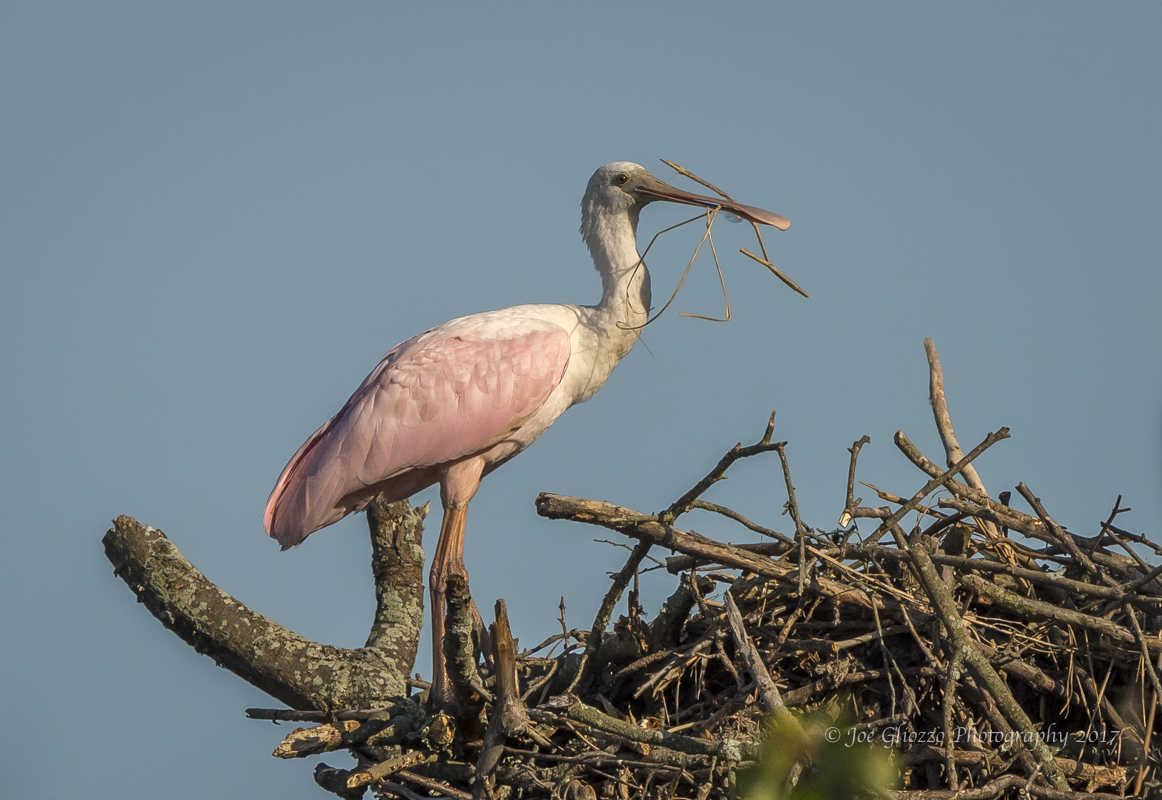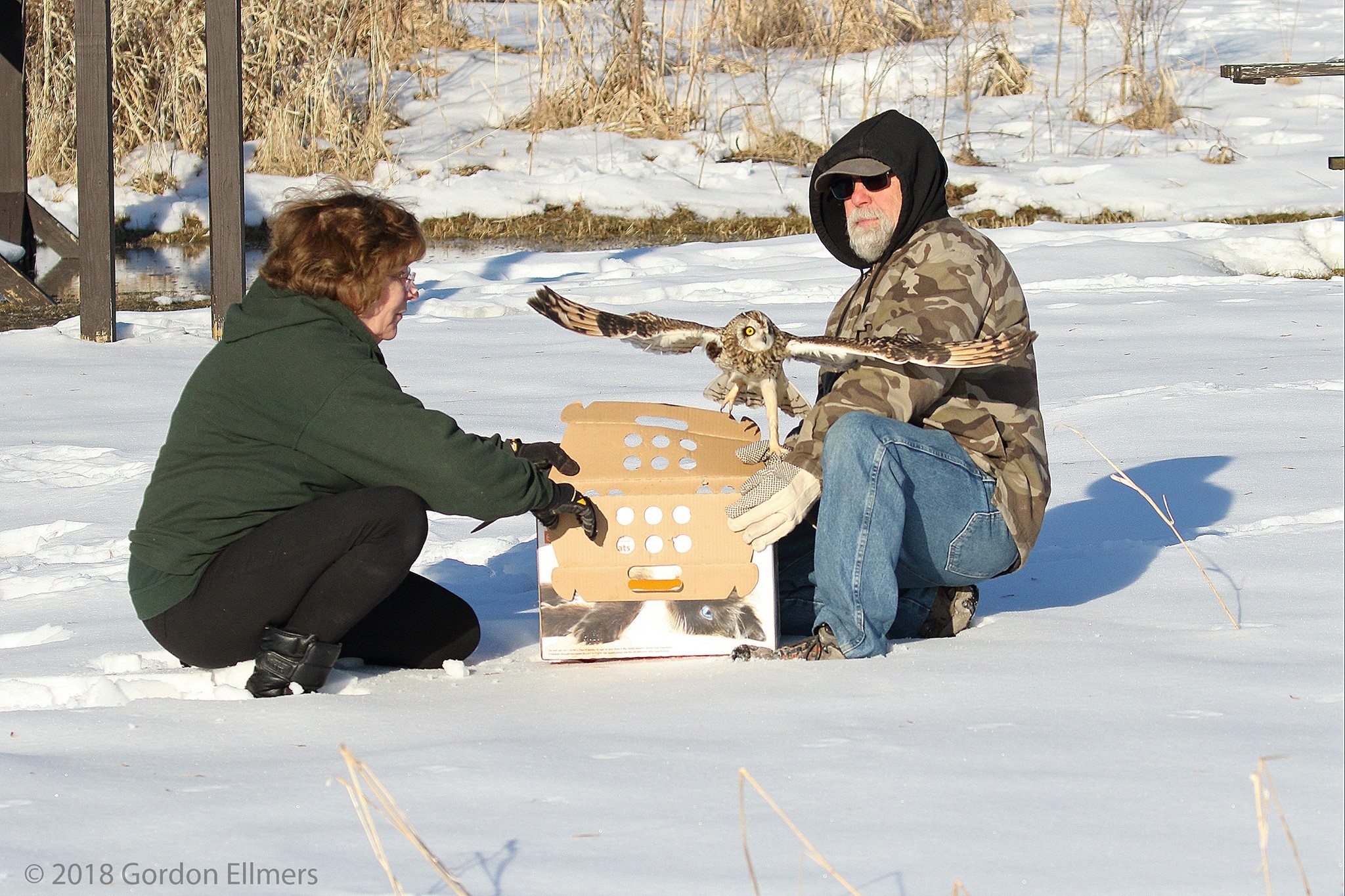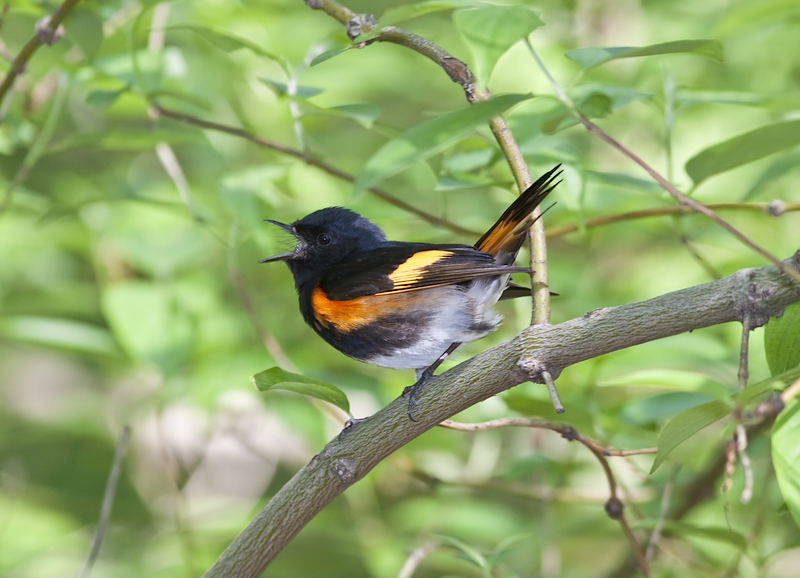Once-In-A-Lifetime Wrong Turn Brings Opportunity & Catastrophe
Photographing a Very Lost Bird in Long Island
Our Reader's Report
ON WINTER MIGRATION TO AFRICA, THIS BEAUTIFUL LITTLE CORNCRAKE TOOK A WRONG TURN AND LANDED ON LONG ISLAND. IMAGE: TOM REICHERT
Tom Reichert is a freelance photographer and avid bird enthusiast from East Northport, New York.
It All Began at Lunch
"NO JOKE" CORNCRAKE. IMAGE TOM REICHERTS
Usually, during lunch, I take a peek at the ABA Listserv to see if anything's going on in the bird world on Long Island N.Y. This is how I determine if I am going to go take some pictures after work or not.
On Tuesday, November 7th, 2017 I noticed a report on the list about a Corncrake on Long Island’s south shore. New York bird experts Ken and Sue Feustel had found the bird along Ocean Parkway near Cedar Beach. Their report read as follows:
A Corncrake (this is no joke ) is currently feeding on the north shoulder of Ocean Parkway east of the Cedar Beach Marina. The bird is staying close to the shrub line from the westbound lane line up the Cedar Overlook cell tower to your left. Also, there is a south facing Emergency Stopping Only sign on the north side of the parkway. Sue and I are watching the bird now.
THE LOST CORNCRAKE FOUND OCEAN PARKWAY'S GRASSY SHOULDERS A FINE PLACE TO REST AND FEAST ON EARTHWORMS & SEEDS. IMAGE: TOM REICHERT
Not Just a Rare Bird - a Mega Rarity!
At first, I was not interested in chasing the corncrake. The weather was nasty. There was no sun, and my work schedule was not going to put me on the south shore of Long Island. Then I did little research on the bird. My interest picked up.
The last time a Corncrake was reported to be seen in New York was 1963. The one before that was 1888. Seeing this bird species on Long Island, New York was truly a once in a lifetime opportunity.
SNOWY EGRETS, LIKE THIS BEAUTY, ARE ONE OF MANY SPECIES YOU CAN EXPECT TO SEE ON LONG ISLAND'S SOUTH SHORE WETLANDS. IMAGE: TOM REICHERT
Headed to Africa, It Lands in New York
The Corncrake is a European bird that breeds in Europe and Asia. Corncrakes are migrators and usually winter in Africa, not New York! The feeling amongst the birders was that it got lost on its way to its wintering grounds during the hurricane season.
LONG ISLAND'S WETLANDS, LIKE THESE AT CEDAR BEACH JUST BEHIND OCEAN PARKWAY, SUPPORT HUNDREDS OF BIRDS, FISH, SMALL MAMMALS & AMPHIBIANS - BUT NOT CORNCRAKES! IMAGE: TOM REICHERT
Under the best circumstances, these birds are hard to spot. The crake is in the rail family of birds but smaller (about the size of a blackbird) and like dry habitat not wet. (Editor's note: there are 5 rail species in North America, the Clapper rail is the one likely found on Long Island)
THE CLAPPER RAIL, AN AMERICAN COUSIN TO THE CORNCRAKE, IS AT HOME IN THE WETLANDS AROUND CEDAR BEACH. IMAGE: TOM REICHERT
Rails are amongst the most secretive birds. Even if you are lucky enough to be on its breeding grounds, it would still be a tough bird to see and photograph due to the tall grass habitat that it prefers. Far more often it is heard but not seen at all.
OK, I've Got to See (and Photograph) this Bird
Now I had to hope that the bird would stick around until I could make some time on Wednesday. Luckily for me it did stick around overnight.
The reports I read stated that the bird was now on the west side of the parkway in the same general area. Cedar Beach is a 20-minute ride from where I was working, and I was ready to go for it.
PHOTOGRAPHERS AND BIRDWATCHER CAME FROM ALL OVER THE COUNTRY TO SEE THE WRONG-TURN CORNCRAKE - BUT STAYED A RESPECTFUL DISTANCE AWAY. IMAGE: TOM REICHERT
By the time I arrived, there were already about 35 people there with their cars parked on both sides of the meridian. Birders with scopes and photographers with long lenses were lined up all along the parkway. On the highway, cars were slowing down to see what all the fuss was about.
Getting the Shot Right
HOW TO GET THE BEST SHOT? TOM WAITED UNTIL THE SUN WAS AT HIS BACK & HE ANGLED LOW. TOM SHARES MORE BIRD PHOTOGRAPHY TIPS BELOW. IMAGE: TOM REICHERT
NEVER IN A MILLION YEARS DID THE ANYONE THINK THEY'D SEE A WILD CORNCRAKE IN THE US. IMAGE: TOM REICHERT
At this point of the day, the sun was at our backs giving us the light needed to get some nice images. Immediately I set my tripod up as low to the ground as possible. The low angle would provide the perspective that I wanted: the bird on the ground eating earthworms and seeds.
I took about 300 shots always waiting for catch light in the eyes and no blades of grass blocking my view. As I was taking my pictures, I could not help but hear the conversations going on around me.
Corncrake in the US? Never in a Million Years
Most of these people had come from way out of state: Maryland, North Carolina, New Jersey, a bunch of the people were from upstate New York. Some came from as far away as Minnesota. They had all dropped everything and traveled here just for a glimpse of this lost bird.
Everyone was saying that never in a million years did they think they would be able to see this bird in this country. And everyone agreed that they could not get this great a view of it even if they went to Europe. After a half hour of shooting I packed up and headed back to work happy with the images I had gotten.
Bad News But Not Due to the (Responsible) Viewers
Bad news came in Thursday morning report. The bird was found dead at 6:30 that morning. It seems the Crake was hit by a car overnight. Many people who were still traveling in from around the country would now not get a chance to see this unbelievable find.
HERRING GULL IS ANOTHER OF LONG ISLAND'S RESIDENT AVIAN SPECIES. IMAGE: TOM REICHERT
Whenever something terrible happens to a special bird, the controversy starts up. On social media people were saying that it must have been because of all the people who went to see it that got the bird killed, others said people should not be giving out locations of rare birds.
I can truly say that this was one of the most behaved crowds that I have seen. Nobody was getting too close to the bird. Perhaps since the bird remained on the far side of the road, it helped this. The fact that the bird was killed overnight, not during the daytime proves that it was not the people getting to close to it that caused its demise.
After the bird's death, it was collected and brought to the American Museum of Natural History. They determined it to be a male bird that had its hind legs and pelvis fractured. Being hit by a car was confirmed as the probable cause of death.
This Mega Rarity that we witnessed on Long Island was truly a wonderful experience and one that I will remember for a long time.
What Photography Equipment I Used
I shot all my images with the Nikon D5 with a 600mm lens and various tele convertors giving me ranges of 600 mm to 1200 mm.
Editors' Note: Bird Human Co-existence Works: Corncrakes need tall, over 8-inches (20cm), grass to nest. Once widespread in the UK, their population crashed as people began efficient tall grass mowing. Today their UK breeding grounds are reduced mostly to the northwestern coast of Scotland, Northern Ireland & the Republic of Ireland). The people of the UK are proving that bird/human coexistence is possible. In 1992 farmers in corncrake breeding areas began delaying the mowing of hay and silage meadows until after July 31, the end of the nesting season. Additionally, they initiated a system of harvesting from the inside first, progressing outward instead inward as usual. This gives chicks time to mature or escape if they are still near the nests. The locally developed system is now government-sponsored. Corncrakes range as far east as Russia, the Caucasus', and Kazakhstan.
THE CORNCRAKE MADE GOOD USE OF ITS TIME AT CEDAR BEACH FILLING UP ON SEEDS AND EARTH WORMS IN THE TALL GRASS ON OCEAN PARKWAY'S SHOULDER, UNFORTUNATELY HE WAS STRUCK BY A CAR AT NIGHT AND KILLED. REST IN PEACE LITTLE TRAVELER. IMAGE: TOM REICHERT.
Many Thanks to Tom Reichert for sharing this experience!
Tom Reichert is a freelance photographer from East Northport, New York. Follow him on Facebook
MORE Birds, Lost & Found
More Birdwatching & Photography
How to Make Friends and Find Warblers in the Hudson River Valley. From Manhattan to Fort Edward, New York
How to Get Fabulous Photos of Bald Eagles at Conowingo Dam
Maryland
One Day in Puffin Paradise, A Photographic Adventure
Machias Island, Maine or Canada(?)










